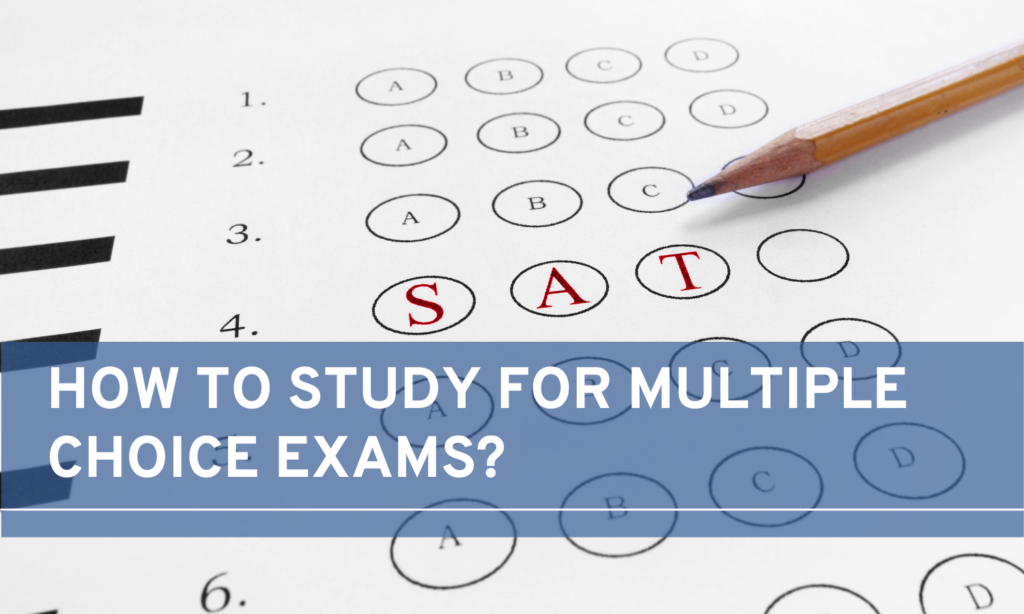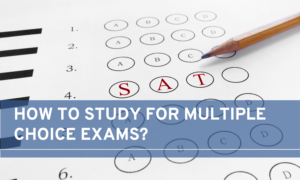Whether you have to take multiple choice exams or just need a quick review of material, you can learn the most efficient way to prepare for them.
Multiple choice exams are often based on details, so the best way to prepare for them is to memorize a few things each day and schedule time for repeated reviews.
This will help you build a reliable long-term memory. Pay special attention to basic terms and make lists or tables of them for future reference.
Table of Contents
Concept maps help you study for multiple choice exams
One question you may have about concept maps is whether they really help you study for multiple choice exams. Redford believes that concept maps do not actually improve test scores.
However, they do allow students to see which areas they have trouble with and what they need to learn more about. Regardless of whether or not they can actually improve your test score, using concept maps is a great way to get a head start on the exams.
When making a concept map, you should first list key concepts. These should be listed in order of importance from the most general to the most specific.
Think of them as the parking lot for the concepts you need to memorize. You can move them in the map as you go along. Also, consider creating cross-links between concepts to better understand their connections.

This method of studying fosters creative thinking because cross-links indicate moments of inspiration.
Although some students report that concept maps are not consistent with their study habits, others find them effective. For example, students in endocrinology did not create concept maps independently outside of class.
Instead, they constructed them during recitation sections. While completing these exercises, they were encouraged to talk with classmates and instructors about their maps, and received feedback during this time.
Thus, it is important to know whether concept maps help you study for multiple choice exams or not.
Using concept maps helps students understand complex subjects better. Unlike traditional methods, they help students retain knowledge better because their brain processes visuals more quickly than text.
Concept maps can help you study for multiple choice exams in the same way they help you understand complex subjects. However, they are more time consuming for beginners and require more work.
However, they can improve test scores. In addition, they can help develop critical thinking skills.
While they can be created with pen and paper, they can be a bit unwieldy. In addition, they can be difficult to share. Instead, you should consider using a web-based concept map tool.
If you’re thinking of making a concept map, it’s time to get started! There are a lot of benefits to using this type of tool to study for multiple choice exams.
Another major benefit of concept maps is that they test higher-level thinking skills. This is especially important for students who are taking multiple choice exams.
The higher level thinking skills that concept maps measure are the most important, so using concept maps to study for multiple choice exams can boost your score.
The higher the quality of your concept maps, the better you’ll be on your tests. And if you use them correctly, you’ll never have to worry about forgetting them again!
Avoiding two similar answers
It is important to recognize that instructors often fall into patterns when writing multiple choice exams. It is easier to eliminate options that are frequently used by an instructor if you recognize that the question was likely asked several times and that one answer is usually “wrong but appealing.”
There are several common wrong answers that instructors tend to formulate. Some of these options include “true but irrelevant” and “too extreme.”
The location of the correct answer is usually C or D, so students often guess this answer in an effort to increase their chances of getting the right answer.
The answer to question one is often the middle or extreme value of the given concept. This approach is ineffective since it makes the question taker choose the correct answer without applying the same knowledge from a previous question.
To avoid this scenario, students should study for multiple choice exams using different methods.
Test-setters use pairs of answers to separate knowledgeable people from those who don’t know enough. In addition, these pairs may be wrong, or contain distracting words.
That’s why you should try to avoid the rule of never changing the first answer when studying for multiple choice exams. Instead, focus on reasoning skills and think about other questions that you may have encountered in the past.
Perhaps you picked up a hint or jogged your memory.
A second important strategy is to always pick the correct answer. When there are multiple answer choices on a multiple choice exam, the best solution is the one that matches the question and eliminates as many similar answers as possible.
By doing this, you will avoid the possibility of randomly guessing the answer. You’ll be able to answer the question in a way that increases your chances of success.
So, while it may be tempting to pick the first answer you see, it’s better to go with the best answer that you know and not make the mistake of selecting it.
Another key strategy when studying for multiple choice exams is avoiding the problem of “all of the above” and “none of the above”. The first option doesn’t require students to think about the problem.
However, it requires partial knowledge of the problem. A second option, “none of the above,” requires students to compare the two answers side by side and determine which is better.
In general, faculty usually place the best answer in the b or c positions, which will result in the wrong answer.
Another solution is to read the questions carefully. While a student may not realize it, they can usually guess the answer from reading the question.
In addition to this, they can analyze the results of the exam and choose the correct answer. If the answers are similar, he/she is unlikely to choose the wrong one. And if it does, he/she can just make a quicker choice.
Dr. Dean’s method
If you’ve ever taken a multiple-choice exam, you know that it’s a difficult, stressful challenge. You have limited time to prepare, and you can’t possibly review every aspect of the material.
However, with Dr. Dean’s method, you can have a better chance of acing the test. If you follow the steps outlined below, you’ll be well on your way to scoring high on your exam.
One of the key concepts behind this method is to read the question very carefully. There’s a reason why distractors are called incorrect. They are written so that they might appear correct, but aren’t.
By carefully reading each question, you can focus on the requirement while ignoring extraneous information. Once you know which answer matches the requirement, you can use the relevant facts to choose the correct one. Some multiple-choice items are written so that the answer is impossible to deduce based on the question alone.
